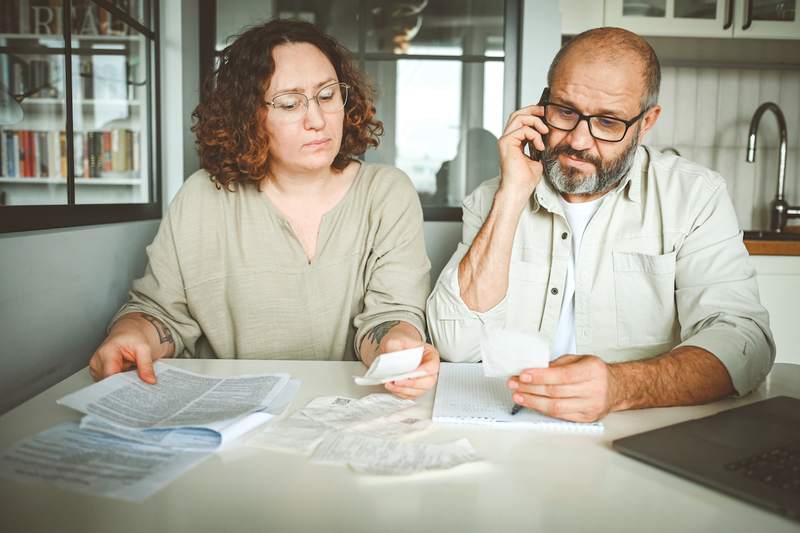An energy-efficient mortgage — also known as an EEM or a green mortgage — is a type of loan intended to help qualified borrowers fund energy-saving home projects and upgrades. EEMs also can be used to buy an existing home with eco-friendly features.
An EEM can be a great idea if you’re looking to make home improvements that reduce your utility costs — such as adding insulation or solar heating and cooling systems — but you don’t want to pay for those projects upfront.
Here’s a look at what EEMs are, how they work, and why you might consider one.
Key Takeaways:
- EEMs finance specific eco-friendly home improvements, such as weatherization treatments.
- There are several EEM options available, including Fannie Mae’s HomeStyle Energy mortgage and Freddie Mac’s GreenCHOICE Mortgage program.
- Instead of getting an EEM, you could also consider alternative options, such as taking out a home equity line of credit to fund the home improvements you want.
How Energy-Efficient Mortgages Work
An energy-efficient mortgage is a type of loan that can be used to fund eco-friendly home improvements, or to finance the purchase of a home that already has energy-saving features. For qualified homeowners, you can refinance with an EEM and use the funds to pay for certain upgrades that will help you save on your utility bill.
Just like with any other home loan, you’ll pay back an EEM with monthly mortgage payments, and your home will be used as collateral.
Part of the underwriting process for an EEM involves a qualified energy auditor estimating how much you’ll save on utility costs. For you to be approved, they must confirm you’ll save an amount equal to or greater than the cost of the home improvement over time.
An EEM takes into consideration the long-term savings on your energy bill, and offers favorable terms as an incentive to apply. For example, many EEM lenders have more lenient debt-to-income ratio requirements, which allow borrowers to qualify for larger loans.
Another thing to keep in mind is that the interest you pay on an EEM is tax deductible.
What are upgrades that can be financed with an energy-efficient mortgage?
EEMs can be used to finance the purchase of a home that’s already energy-efficient. They also can pay for energy-saving upgrades and appliances in a home that you already own.
It’s important to note that not all upgrades will qualify, and eligibility may vary from one program to the next. However, upgrades that EEMs typically finance include:
- Energy-efficient appliances, like a washing machine or refrigerator.
- Energy-efficient windows.
- Energy-efficient heating and cooling systems.
- Energy-efficient heat pumps and furnaces.
- Energy-efficient water heaters.
- Weather stripping and caulking.
- Insulation throughout the home, including in the attic, walls, floors, and window frames.
- Installation of a duct system and repairs.
- Qualified roofing improvements.
- Weatherization treatments.
Different Types of Energy-Efficient Mortgages
There are two types of energy-efficient mortgages: conventional EEMs and specialty mortgages.
Conventional EEM programs follow national standards and are offered by federal agencies and government-sponsored enterprises. These include the Federal Housing Administration, the Department of Veterans Affairs, the Department of Agriculture, as well as Fannie Mae and Freddie Mac.
Specialty mortgages are often created jointly by individual lenders and local or state governments. They are less standardized, and requirements can vary from lender to lender.
Here’s a breakdown of your options if you’re considering a conventional EEM.
Fannie Mae’s HomeStyle Energy mortgage
Fannie Mae’s HomeStyle Energy mortgage can be issued by any approved lender. It’s available for existing properties with up to four units, as well as manufactured homes, as long as the financed renovations don’t involve structural changes.
With a HomeStyle Energy mortgage, eligible borrowers can:
- Access up to 15% of their home’s “as-completed” appraised value — or the property’s market value after the improvement is made — to use for various energy-saving home improvements.
- Finance a home purchase up to 75% of the lesser of:
- The renovation costs plus the purchase price.
- The as-completed appraised value.
- Refinance up to 75% of the as-completed appraised value.
- Pay off existing energy-related debt, such as a property assessed clean energy loan, which is a mortgage that can be used to finance renewable energy improvements.
The HomeStyle Energy mortgage also can finance improvements that make a home’s water or energy usage more efficient, as well as upgrades that incorporate a renewable source of energy in the home.
Unlike many EEM programs, a HomeStyle Energy mortgage allows borrowers to use the funds to protect their homes against natural disasters. The program offers up to $3,500 in financing to use toward weatherization.
Some examples of weatherization upgrades permitted by the HomeStyle Energy mortgage include:
- Retrofitting your foundation for earthquakes.
- Removing brush or trees that are in fire zones.
- Building storm surge barriers.
- Installing radon mitigation systems.
These resiliency upgrades don’t require a home energy report, which measures how much energy your home uses compared to similar homes in the area. This can lower the barrier for entry for many homeowners.
Freddie Mac’s GreenCHOICE Mortgage
Freddie Mac’s GreenCHOICE Mortgage program resembles Fannie Mae’s HomeStyle Energy mortgage. Some similarities include:
- Financing for energy-efficient improvements up to 15% of the as-completed appraised value.
- The maximum loan-to-value ratio to qualify is 97%.
- Can be used for properties with up to four units, as well as manufactured homes.
One of the main differences is that a GreenCHOICE Mortgage can be used for new properties and condominiums. In some cases, co-ops are allowed as well. A GreenCHOICE Mortgage also doesn’t require an energy report for improvements costing an aggregate of $6,500 or less.
With a GreenCHOICE Mortgage, you can finance basic energy-saving improvements, including:
- Installing programmable thermostats.
- Upgrading to low-flow water fixtures.
- Air sealing.
- Adding insulation.
- Replacing lightbulbs with more energy-efficient ones.
- Installing new eco-friendly appliances.
- Upgrading to a solar water heater.
FHA energy-efficient mortgage program
With the FHA energy-efficient mortgage program from the Department of Housing and Urban Development, qualified FHA loan borrowers can add an energy package to their existing home loan. Like any EEM, this energy package can fund energy-saving improvements.
The maximum amount you can borrow is 5% of whichever is less:
- The home’s adjusted value, which is the property’s value after the improvements are made.
- 115% of the median cost of a single-family dwelling in the area.
- 150% of the national conforming loan limit, which is $726,200 in 2023 for a single-family home in most areas.
An important thing to note about this type of EEM is that improvements to existing or new-construction homes can’t just be energy-efficient. They also must be cost-effective. That means over the expected life of the improvements, you must save more money than the cost of installation.
To determine the cost-effectiveness of the improvements, a qualified home energy assessment is required. This also ensures any improvements will meet the most up-to-date International Energy Conservation Code standards. This code sets minimum energy conservation requirements for new-construction homes.
You can combine an energy-efficient mortgage from the FHA with other programs as well. These include:
- The section 203(k) rehabilitation mortgage program, which allows borrowers to finance several home improvement or remodeling projects at the same time.
- The energy-efficient home program, which can help borrowers qualify for a larger loan amount if their home meets certain energy standards.
- The solar and wind technologies policy, which allows borrowers to bundle the cost of a new wind or solar energy system into their FHA loan.
- The weatherization policy, which enables borrowers to finance up to $3,500 for weatherization features and systems, like thermostats and home insulation.
USDA loan
Eligible borrowers in rural areas can take out a USDA loan, which offers up to 100% financing to buy, build, refinance, move into, or improve an eligible home.
While these loans aren’t exclusively designed for energy-efficient updates, they allow qualified borrowers to buy, refinance, or improve a home while also adding these cost-saving features. These 30-year loans can be used to cover costs such as replacing appliances, updating heating and cooling equipment, improving the foundation, and even grading the property.
There are no down payment or minimum credit score requirements with this program. However, borrowers will need to meet income requirements and plan to buy, build, or move into a home in a qualifying rural area.
VA energy-efficient mortgage
Borrowers who qualify for a VA loan may also be eligible for a VA EEM. These loans provide borrowers with additional funds for energy-efficient and cost-saving home improvement projects.
Eligible home improvements include:
- New insulation.
- Solar heating and cooling systems.
- Storm or thermal windows and doors.
- Weather stripping and caulking.
- Heat pumps.
- Furnace efficiency modifications.
- Vapor barriers.
- Clock thermostats.
A loan may be increased by $6,000 or less without VA approval. If the loan will be increased by more than $6,000, a higher valuation of the property is required.
Energy-Efficient Mortgage Requirements
Each energy-efficient mortgage program has its own requirements and qualifications, so it’s important to thoroughly read the guidelines of the program you’re interested in using. In general, your eligibility will be determined based on factors like your income, credit history, and DTI ratio.
Once qualified, you may be required to submit to an energy audit or assessment of the home, particularly if you’re planning to make upgrades to a home you already own. This assessment will ensure that your planned improvements are eligible for EEM financing. You also may need to provide the mortgage lender with a list of your planned improvements and any quotes you received.
After getting approved, you’ll be required to use the EEM funds to make the specified improvements to your home. Some loans allow you to make the improvements prior to closing, while others may require you to keep the earmarked funds in escrow, then provide the lender with a report once complete.
Alternatives to Energy-Efficient Mortgages
Using an EEM isn’t the only way to finance energy-efficient home improvements or the purchase of an existing home with eco-friendly features. Here are some alternatives to consider, if qualified:
- Cash-out refinance. With a cash-out refinance, you can tap into your home’s equity to withdraw cash. This replaces your existing mortgage with a new loan, complete with a new interest rate and terms. You can use the money to fund energy-efficient home improvements, add cost-saving features and appliances, remodel, and more.
- Home equity loan. A home equity loan is like a cash-out refinance in that you can tap into your home’s equity for cash, but it doesn’t replace an existing mortgage. You can use this cash to fund energy-efficient improvements.
- Personal loan. A personal loan is a type of unsecured debt, so it typically has a higher interest rate and shorter repayment term, resulting in a higher monthly payment than a loan secured by your home. However, a personal loan can give you quick access to funds for various home improvement projects.
Where To Find Energy-Efficient Mortgage Lenders
If you’re looking for an EEM lender, you can start by asking your real estate agent for recommendations. You also can ask mortgage lenders if they offer EEMs.
Another option is to check out the HUD lender list search. You can search for lenders based on various criteria such as location, loan type, property type, and more.
Should You Get an Energy-Efficient Mortgage?
If your home is already energy-efficient, then an EEM might not be for you. And if the energy-efficient home improvements don’t save you money in utility costs, then you won’t be approved for an EEM. For homeowners who don’t meet EEM requirements, it may make more sense to explore alternatives to fund home improvements, such as a cash-out refinance.
However, an EEM may be worth it if you want to fund cost-saving and energy-efficient upgrades to a home you already own. With an EEM, you can replace appliances and windows, weatherize a property, secure it against natural disasters, and reduce your overall energy expenses without paying for improvements upfront.
EEMs also can help finance the purchase of an existing home with energy-efficient features. This type of mortgage might be a good idea if you already qualify for a loan through a lender that also offers EEMs, and are planning to make permitted improvements anyway.
Energy-Efficient Mortgage FAQ
Here are answers to some frequently asked questions about energy-efficient mortgages.
Yes, you can make an older home more energy-efficient, which also can improve its value.
“EEMs can be used for both homes that already exist and homes that are newly built,” says Boris Dorfman, president and fund manager of LBC Capital in Long Beach, California. “However, they are usually linked more often with existing homes. This is because they let homeowners update their houses with energy-saving features, which could help cut down on future utility costs.”
If you qualify, you can refinance your existing home loan into an EEM. This allows you to access funding for various cost-saving and energy-efficient projects.
However, it’s important to note that refinancing comes with various costs. Also, make sure you aren’t replacing your current mortgage with one that has less favorable terms and rates.
Before making this decision, consider the pros and cons of refinancing.
The Bottom Line on Energy-Efficient Mortgages
EEMs can be a great option to add cost-effective and energy-saving features to your home while paying for these projects over time. With an EEM, you can make qualified improvements, boost your home’s value, and save money on future utility costs without depleting your savings account in the process.






